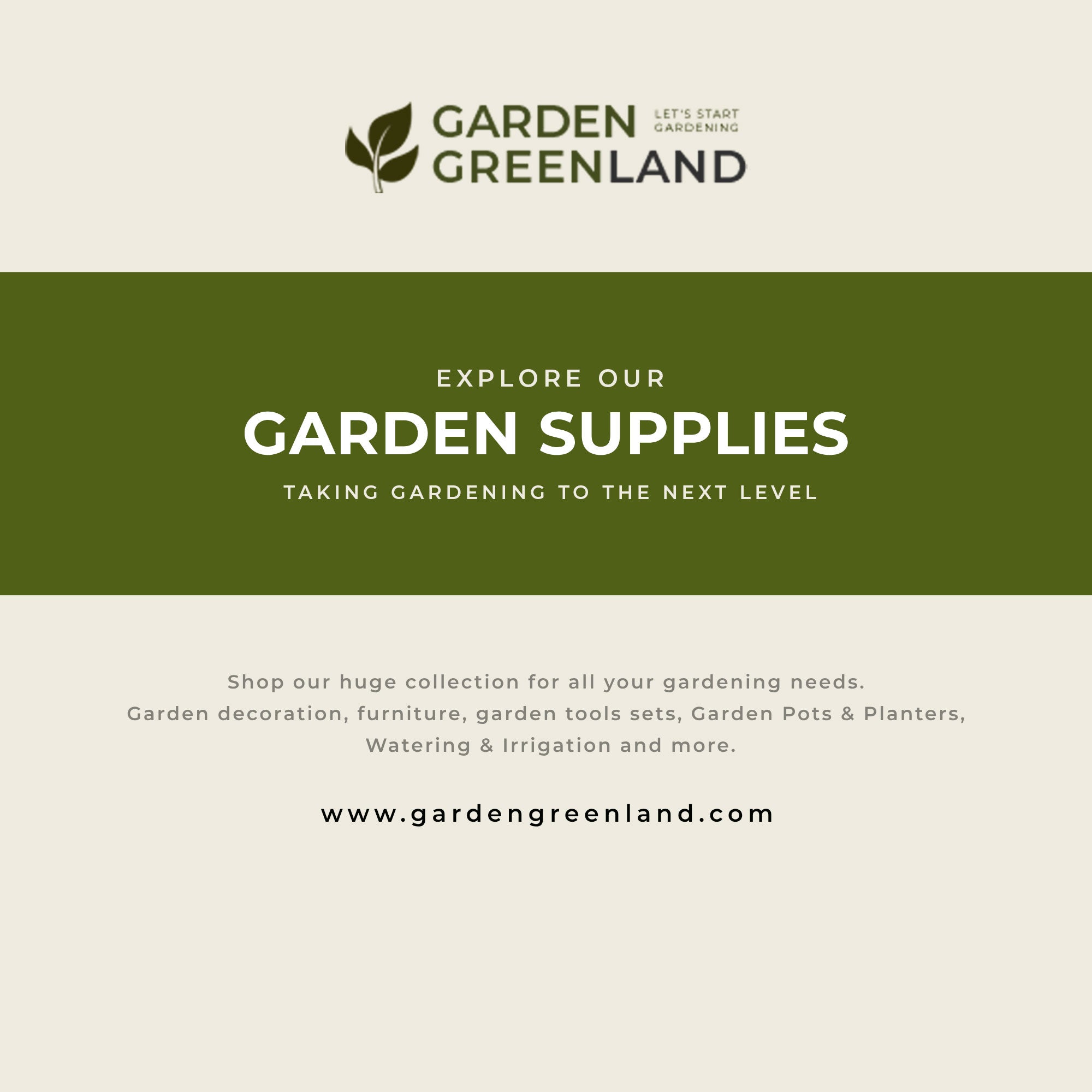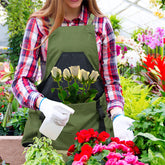How Many Plants Per Grow Bag: Optimizing Your Gardening Space
Table of Contents
- Introduction
- Understanding Grow Bags
- Determining the Right Number of Plants Per Grow Bag
- Best Practices for Grow Bag Gardening
- Conclusion
- FAQ
Gardening has seen a resurgence in recent years, with more people discovering the joys of cultivating their own plants, whether for food, decoration, or relaxation. One innovative solution that has gained popularity among gardeners is the use of grow bags. These versatile containers allow us to maximize space, especially in urban settings or smaller gardens. But how many plants can we effectively grow in a grow bag? This question is crucial for optimizing our gardening efforts and ensuring healthy plant growth.
In this blog post, we will explore the various factors influencing the number of plants we can grow in a grow bag. We will delve into the benefits and drawbacks of using grow bags, the ideal sizes for different plants, and best practices for planting and caring for these containers. By the end of this post, we aim to empower every gardener—whether novice or seasoned—with knowledge to make informed decisions about their gardening strategy, and of course, to highlight how Garden Greenland can support your gardening journey with our premium products.
Introduction
Did you know that nearly 80% of Americans believe that gardening has a positive impact on their mental well-being? Gardening not only provides a sense of accomplishment but also brings us closer to nature. As more of us embrace this fulfilling hobby, innovative solutions like grow bags are changing how we approach gardening.
Grow bags are not just a passing trend; they are a practical choice for gardeners of all levels. They offer flexibility, excellent drainage, and portability, making them a perfect option for anyone looking to enhance their gardening experience. But a common question arises: how many plants can we realistically grow in a grow bag?
Understanding the limitations and possibilities of grow bags is essential for effective gardening. This post will comprehensively discuss the types of plants suitable for grow bags, the ideal number of plants per bag based on size and type, and the best practices for planting and maintenance. We’ll also share insights on how our premium products at Garden Greenland can help you get the most out of your gardening endeavors.
Let’s embark on this journey together to explore the optimal use of grow bags in our gardening practices!
Understanding Grow Bags
Before diving into the specifics of how many plants we can place in a grow bag, it’s essential to understand what grow bags are and their advantages.
What Are Grow Bags?
Grow bags are containers made from breathable fabric, typically constructed from heavy-duty landscape fabric. These bags provide an excellent environment for root growth, allowing air circulation and preventing root binding—an issue common with traditional plastic pots. The porous nature of grow bags allows excess water to drain while maintaining moisture levels necessary for healthy plant growth.
Benefits of Grow Bags
- Air Pruning: As roots reach the edge of the bag, they encounter air and stop growing in that direction, preventing root binding and promoting healthier, bushier plants.
- Portability: Grow bags are lightweight and often equipped with handles, making it easy to relocate plants as needed.
- Space Efficiency: Perfect for small spaces, grow bags can fit on patios, decks, and balconies, providing flexible gardening options.
- Soil Quality Control: With grow bags, we can use clean, disease-free soil, reducing the risk of soil-borne diseases that can affect plant health.
- Versatility: They can accommodate a wide range of plants, from vegetables and herbs to flowers and ornamentals.
Drawbacks of Grow Bags
While grow bags offer numerous benefits, there are a few considerations to keep in mind:
- Water Retention: Grow bags can dry out faster than traditional pots, requiring more frequent watering.
- Temperature Fluctuation: They may heat up quickly in the sun, potentially impacting sensitive plants. We recommend using darker bags in cooler climates to help retain warmth.
By understanding both the benefits and drawbacks, we can make more informed choices about how to utilize grow bags effectively in our gardening projects.
Determining the Right Number of Plants Per Grow Bag
Now that we have a foundational understanding of grow bags, let’s explore how to determine the optimal number of plants we can grow in them.
Factors to Consider
- Size of the Grow Bag: Grow bags come in various sizes, typically ranging from 1 gallon to 50 gallons. The size of the bag will significantly influence how many plants can be accommodated.
- Type of Plant: Different plants have varying root structures and growth habits. For example, deep-rooted plants like tomatoes will require more space than shallow-rooted plants like lettuce.
- Growth Habit: Indeterminate varieties of plants (which continue to grow and produce throughout the season) generally require more space than determinate varieties (which grow to a set size and produce all at once).
- Plant Spacing Requirements: Each type of plant has specific spacing needs that must be followed to ensure healthy growth. Overcrowding can lead to competition for nutrients and light, ultimately reducing yields.
General Guidelines for Planting
To help guide your planting decisions, here are some general recommendations based on popular grow bag sizes:
1-Gallon Grow Bags
- Ideal for herbs and small annual flowers.
- Plants per bag: 2-3 small herbs (like basil or parsley).
5-Gallon Grow Bags
- Suitable for small vegetable plants.
- Plants per bag: 1 medium plant (like a single pepper) or 2-3 small plants (like lettuce or radishes).
7-Gallon Grow Bags
- Great for larger herbs and smaller vegetable varieties.
- Plants per bag: 1 large plant (like a tomato) or 2-3 medium plants (like eggplants).
10-Gallon Grow Bags
- Perfect for medium-sized vegetables and small fruiting plants.
- Plants per bag: 1-2 large plants (like cucumbers) or 2-4 smaller plants (like zucchini).
15-Gallon Grow Bags
- Suitable for larger vegetable plants or small fruit trees.
- Plants per bag: 1 big plant (like a sweet potato) or 2-3 medium plants (like peppers).
25-Gallon Grow Bags
- Excellent for larger fruiting plants or multiple smaller plants.
- Plants per bag: 1 large plant (like a full-sized tomato) or several smaller plants (like onions or garlic).
Tips for Successful Planting
- Follow Spacing Guidelines: Always check the recommended spacing for each plant variety and adhere to it to avoid overcrowding.
- Group Compatible Plants Together: Mix and match plants with similar watering and light requirements to create a harmonious growing environment.
- Use Quality Soil: Invest in high-quality potting soil that retains moisture while allowing for proper drainage. At Garden Greenland, we offer premium soil mixes designed to optimize plant growth.
- Monitor Watering Needs: Be diligent about watering, as grow bags can dry out quickly. Check soil moisture regularly and adjust your watering schedule accordingly.
- Consider Vertical Gardening: If you're short on space, consider using vertical supports for climbing plants, maximizing both vertical and horizontal space.
Best Practices for Grow Bag Gardening
To ensure we get the best results from our grow bags, let’s explore some best practices.
Choosing the Right Soil
Using the right soil mix is crucial for healthy plant growth. We recommend a blend of potting soil, compost, and perlite or vermiculite to enhance drainage and nutrient retention. Avoid using garden soil, as it can be too dense for grow bags.
Location Matters
Place grow bags in a location that receives adequate sunlight. Most vegetables prefer full sun, which means at least 6-8 hours of direct sunlight daily. If you’re gardening in a hot climate, some afternoon shade can help protect plants from scorching.
Fertilization
Regular fertilization is important, as nutrients can leach out of the grow bag with frequent watering. We suggest using a slow-release fertilizer when planting and supplementing with liquid fertilizer every few weeks during the growing season.
Irrigation Techniques
Due to their excellent drainage, grow bags require more frequent watering than traditional pots. Employ methods like the “water, wait, water” technique to ensure soil absorbs moisture without overwhelming the plants. Alternatively, consider drip irrigation for efficiency.
Plant Rotation
To maintain soil health and fertility, rotate crops each season. This practice prevents nutrient depletion and reduces the risk of soil-borne diseases.
Conclusion
Using grow bags is an innovative and practical approach to gardening, especially for those with limited space. By understanding the factors that influence how many plants we can grow in a grow bag, we can maximize our gardening efforts and enjoy the many benefits of this method.
At Garden Greenland, we are committed to providing premium gardening products that support your gardening journey. From high-quality grow bags to nutrient-rich soils, our offerings are designed to help you cultivate a thriving garden that connects you to nature.
As we’ve discussed, the number of plants you can grow in a grow bag depends on various factors, including the size of the bag and the type of plants. By following the guidelines and best practices outlined in this post, we can create a flourishing garden that not only enhances our living spaces but also provides us with fresh produce and a sense of accomplishment.
Let’s embrace the gardening journey together—happy planting!
FAQ
What is the best size grow bag for tomatoes?
For tomatoes, we recommend using at least a 10-gallon grow bag to ensure enough space for root development. Larger varieties may benefit from 15-gallon bags.
Can I plant different types of plants in the same grow bag?
Yes, but be mindful of the plants' growth habits and spacing requirements. Mixing deep-rooted and shallow-rooted plants can be effective, such as pairing tomatoes with herbs.
How often should I water my plants in grow bags?
Watering frequency depends on the season and plant type, but generally, check the soil moisture daily. In hot weather, you may need to water every day.
Are grow bags reusable?
Yes, grow bags can be reused for multiple growing seasons if they are well cared for and not damaged. Just remove the old soil, clean the bags, and refill them with fresh soil.
What is the best soil mix for grow bags?
A good mix is two parts potting soil to one part compost, adding perlite or vermiculite for improved drainage. This combination retains moisture while providing essential nutrients.
Can I use grow bags indoors?
Absolutely! Grow bags are suitable for indoor gardening as well. Just ensure they have good drainage and are placed in a location with adequate light.
By addressing these common questions, we hope to further support your gardening endeavors and encourage you to explore the benefits of grow bags fully. Happy gardening!









